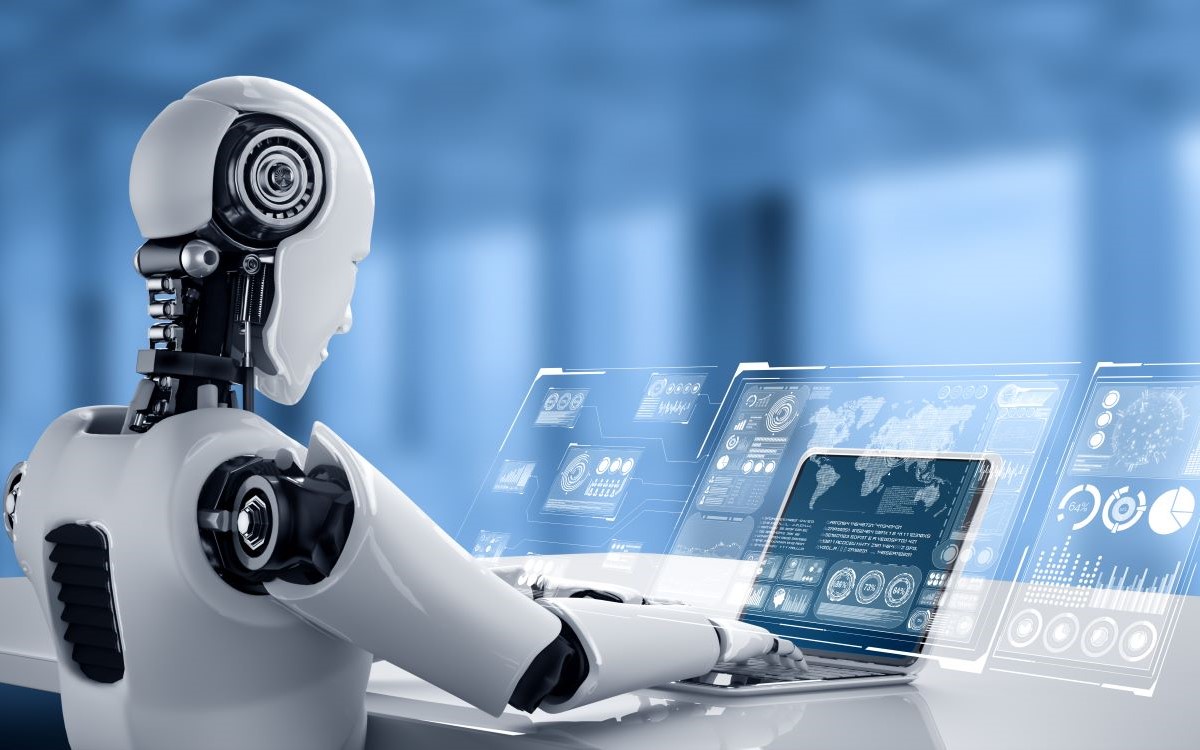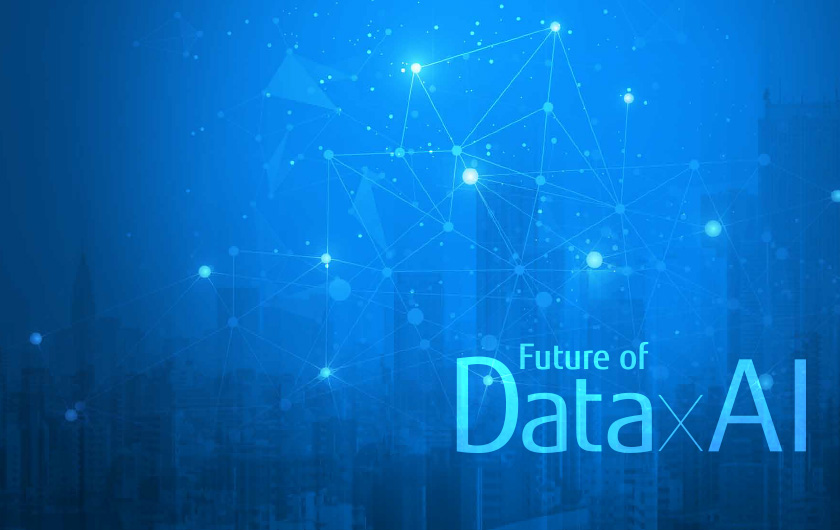
Data is currently the key driver of Digital Transformation (DX), and it is said to be the oil that will move business forward and generate profits in the future.
However, in reality, only a limited amount of data is used effectively, and most remains unmined and untouched.
This fact led Fujitsu to formulate Design the Trusted Future by Data × AI, which is a process and framework for supporting goal-oriented business. This allows organizations to capture data more efficiently and implement AI in order to identify insights and accelerate and improve their business processes.
Management wants DX, but employees cannot implement it
METI warns of the "2025 Digital Cliff"
Many companies have begun to work towards DX, which has been defined in multiple ways.
One research company describes DX as a company's activities to generate value and establish competitive advantage by transforming the customer experience both on- and off-line. It does this with new products, services, and business models, which the company creates by making the most of a third-party platform (encompassing cloud, mobility, big data/analytics, and social technology).
The company handles disruptive changes in the ecosystem (customers and the market) while taking the initiative to reform their internal organization, culture, and employees.
The Japanese government recommends the introduction of DX. In May 2018, the Ministry of Economy, Trade, and Industry (METI) launched the Study Group for Digital Transformation.
In September 2018, the Study Group issued a report entitled DX Report: Overcoming the '2025 Digital Cliff' Involving IT Systems and Full-Fledged Development of Efforts for DX*. This was based on the notion that companies must decide upon a management strategy which includes how to plan business change through DX initiatives.
The report warned companies about existing systems because:
- Aging mission-critical systems are obstacles to DX.
- There may be up to ¥12 trillion ($100 billion) in financial losses per year from 2025 onwards, unless legacy systems and processes are updated.
These warnings suggest that the Japanese government is paying attention to the importance of DX. In fact, many business owners think the success or failure of DX will alter the future direction of their companies.
The preceding paragraphs may give you the idea that many Japanese companies are realizing DX. However, this is not exactly the case. There are many instances where management wants to implement DX, but employees have not been able to implement anything specific, or where management has been unable to show employees the concrete results when DX is realized.
DX requires a clear objective, which is the prerequisite to effective data use
So, what is necessary to realize DX?
Data is the foundation of digitization, and it is important to clearly lay out the goals. This could mean aiming to obtain new customers or increasing revenue. It is also necessary to consider the types of problem-solving that will be necessary to achieve the goals, as well as what data is necessary to solve the problem. Of course, data alone will not solve challenges.
The DIKW Pyramid Model (Figure 1) is an approach to create solutions from data. From the base to the top, this pyramid model contains Data, Information, Knowledge, and Wisdom. Data becomes information when collected, and information produces knowledge that is then used as wisdom. It is only after data has gone through this value generation cycle that it can be used effectively to solve problems.
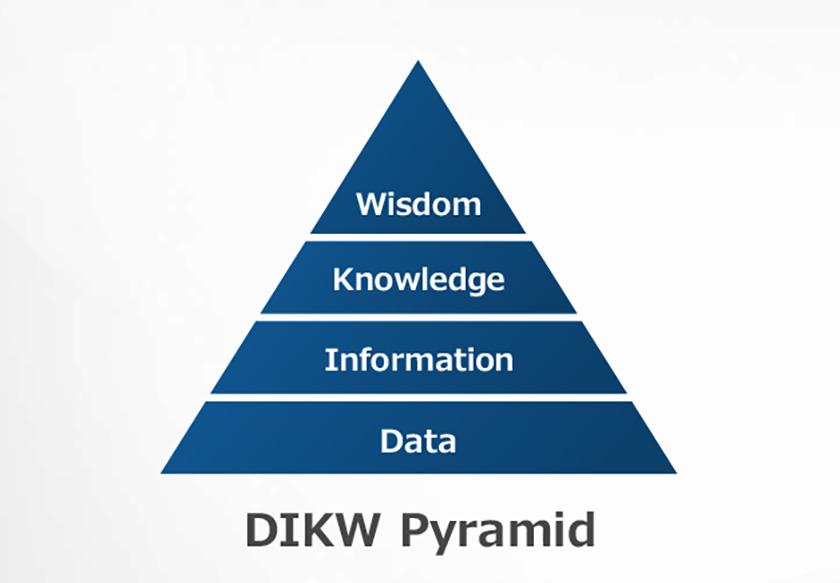
Figure 1: Data can only be used effectively after it goes through the value generation cycle.
What "data as the new oil" tells us about the value of data
AI is a powerful tool for using data to obtain knowledge. In the current “third AI boom”** , deep learning technology has emerged, further expanding the scope of AI’s uses. This technology learns from data and autonomously arrives at answers.
The phrase "data is the new oil" (Figure 2) is used to describe the value of data. Oil is useless if unprocessed. It is used to achieve the goal of moving an object only after being refined into gasoline and then combusted by an engine. Data is like oil: it can be used to achieve a goal only after being refined and transformed into an easy-to-use format through cleansing, labeling, and processing by way of AI. Thus, in the same way that oil is made valuable, tremendous value from data can be realized through the effective application of AI.
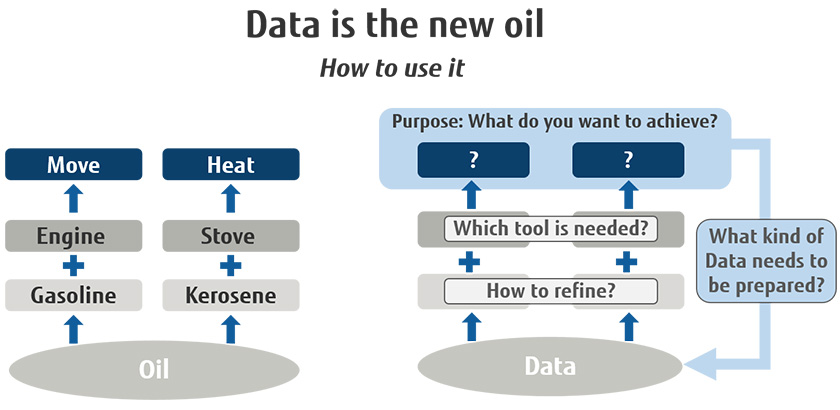
Figure 2: Like oil, data is useless until processed.
How should AI be implemented to realize DX?
The integrated use of data and AI is essential for DX. To realize this, Fujitsu has formulated Design the Trusted Future by Data × AI (hereafter referred to as Data x AI). This is a process and framework to more efficiently implement DX for each business goal through the integrated use of data and AI technologies. Data × AI consists of a standard process for achieving goals, providing services and technologies to support the process, and supplying a framework of reference models; resulting in business benefits derived from data.
Data × AI has been developed with a vision of creating a better, human-centric, and trusted future. For more than a decade Fujitsu has placed its human-centric approach at the core of all business projects. Of course, Data × AI is no exception. With more than 30 years of experience developing AI technologies, Fujitsu believes AI is a tool well-suited to help people and businesses make better, more informed decisions that ultimately improve our global society and create a human-centric, trusted future.
Three key points that enabled Fujitsu to develop Data x AI
To date, across many industries, the application of AI technologies to general business processes has led to some success in achieving customer goals. Yet there is tremendous potential to access and better understand more data, and then turn that into wisdom by further leveraging cutting-edge AI technologies.
The following three points explain how Fujitsu’s experience has led to Data × AI:
1. Fujitsu has reference models that can be applied globally. The reference models defined by Data × AI are collections of wisdom from development centers in Japan, Asia, the Americas, and Europe. Customers can choose the models that best suit their business.
2. Fujitsu is an experienced systems integrator. Fujitsu has a rich history of supporting customers across a wide range of businesses as a systems integrator. Making the most of this experience, Fujitsu incorporates its rich expertise, tools and approaches into the system integration process to support businesses. This experience extends to a field-proven methodology for efficiently solving issues that inevitably arise when integrating technology into business operations.
3. Fujitsu knows how to deploy the AI technology. We are said to be in the “third AI boom”, and Fujitsu's AI research began during the first AI boom. This research has continued for more than 30 years. As a result, no other company has accumulated techniques to match Fujitsu. Furthermore, Fujitsu collaborates with various research organizations and institutes around the world to create advanced AI solutions, technologies and services (Figure 3).
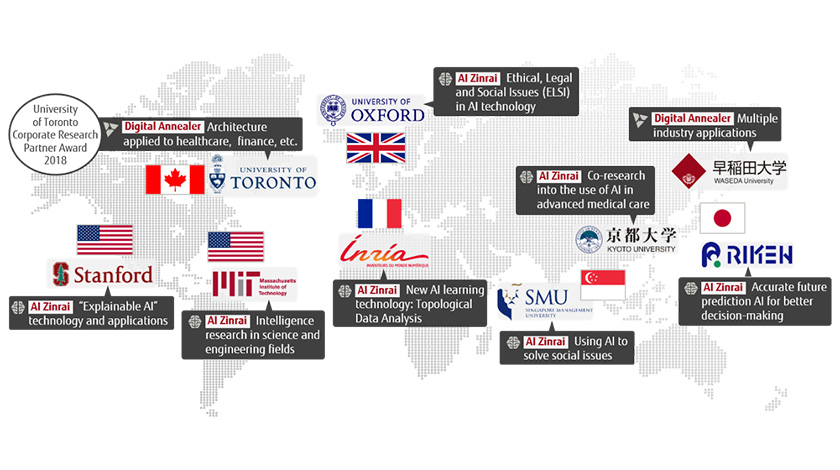
Figure 3: Fujitsu collaboration with global research and development teams and institutions
Process and framework to maximize data value
Here is a closer look at how Data × AI is structured. The process consists of four phases: purpose setting, data preparation, data utilization, and process implementation (Figure 4).
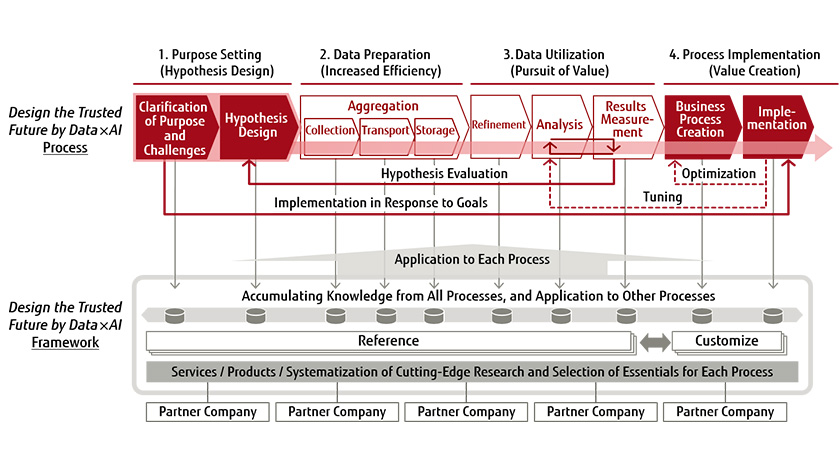
Figure 4: The four process phases of Data × AI
In the purpose setting phase, detailed goals and issues are identified and clarified by the business and in collaboration with the Fujitsu team. A hypothesis on the method for using data and AI to solve the issues is then developed. During the data preparation phase, the data necessary for addressing the identified issues is selected, and mechanisms to efficiently collect such data are considered. In the data utilization phase, data is refined through labeling to facilitate use by AI. The refined data is used for analysis, and the effects on goals are measured. Finally, in the process implementation phase, the refined data is used and made into part of the business operations in order to generate value.
Though all of the phases are important, Fujitsu puts particular emphasis on the purpose setting phase (the first phase) and the process implementation phase (the final phase). AI is but a tool and demonstrates its capabilities only when a clear goal is given. If the goal keeps changing, DX cannot be achieved. Moreover, data cannot generate any additional value if a Proof of Concept (PoC) is not completed, or if the process implementation phase is not reached.
In some companies, different divisions or teams may be in charge of different phases. Fujitsu can clearly lay out what each division or team must achieve to ensure that use of AI is well integrated into the customer's business operations.
A framework based on cutting-edge technologies, products and services
The basic premise of Data × AI is that it offers a lineup of technologies, products and services that are suitable for various processes and provides customers with what they need. Also, as described earlier, cutting-edge technologies under development at research and development centers worldwide can be used in these processes (Figure 5).
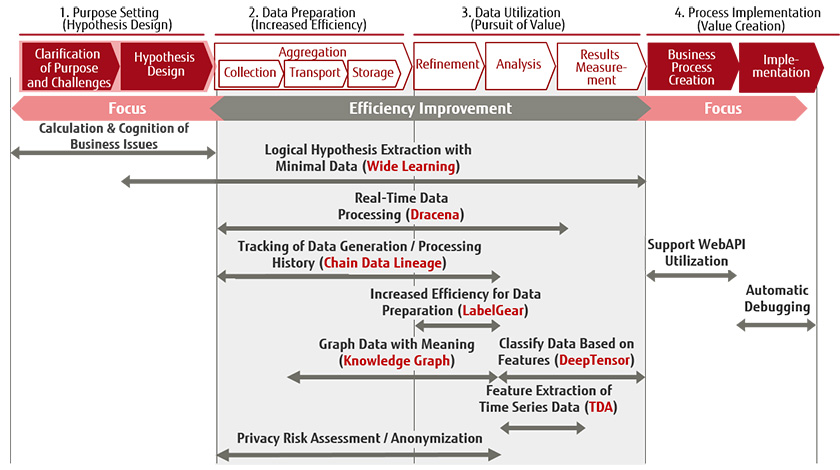
Figure 5: A framework built on a foundation of cutting-edge technologies, products and services
Many types of AI technologies have been developed by Fujitsu. However, these existing technologies alone may not be enough to solve all issues and fully achieve customer goals. If expected to be effective for specific business challenges, Fujitsu will consider offering technologies that are in the research stage and not yet available for general use.
How AI technologies contribute to value generation
Some of the cutting-edge Fujitsu AI technologies that are already in practical use are described below.
Wide Learning: Identifying solutions from a small volume of data
Wide Learning can draw-out hypotheses and find valid solutions from a small amount of data. This technology can decrease the challenges of introducing AI through its ability to offer logic and reasoning for AI’s decision, allowing humans to understand and accept the result. With this technology, customers can realize effects or risks that have gone unnoticed, make easier decisions and prioritize actions.
LabelGear: Increasing data preparation efficiency
When applying AI to business challenges, data preparation continues to be a substantial hurdle. LabelGear increases data preparation efficiency with its unique analysis techniques. It autonomously groups similar pieces of data and labels what is necessary. As a result, training data can be generated efficiently.
More than 30 European companies are now testing LabelGear. In some cases, the time necessary to create training data has been reduced by a factor of 50. With LabelGear, a German automobile manufacturer has automated the detection of scratches and color unevenness on vehicles after the painting process. A Finnish steel manufacturer has also implemented automatic detection and classification of defects that occur during iron plate manufacturing.
Topological Data Analysis: Enabling analysis of time series data
Topological Data Analysis (TDA) has been gaining attention as a new analysis method which goes beyond deep learning. Fujitsu and Inria, the French National Research Institute, are conducting joint research on TDA.
The technology performs data analysis using an approach from the field of mathematics called topology. TDA’s key feature is the ability to analyze chronological data, which is difficult to do with traditional deep learning.
Fujitsu will work with customers to incorporate these technologies into their business operations. By incorporating Fujitsu’s significant experience and know-how in Data × AI, information, knowledge and wisdom are derived from data to help customers efficiently solve challenges and accelerate their business. In this way, Fujitsu enables customers to realize digital transformation in support of their business goals and the creation of a human-centric, trusted future.
[Part 2] will introduce examples of how "Design the Trusted Future by Data × AI," which has been designed to support companies' and organizations' realization of DX, has moved business forward faster.
*: “METI Releases a Report on Digital Transformation: Overcoming of '2025 Digital Cliff' Involving IT Systems and Full-fledged Development of Efforts for Digital Transformation”
**: “Deep learning sparks third artificial intelligence boom” https://asia.nikkei.com/Business/Biotechnology/Deep-learning-sparks-third-artificial-intelligence-boom
“Recent Trends in AI-related Inventions - Report” https://www.jpo.go.jp/e/system/patent/gaiyo/ai/document/ai_shutsugan_chosa/report.pdf









